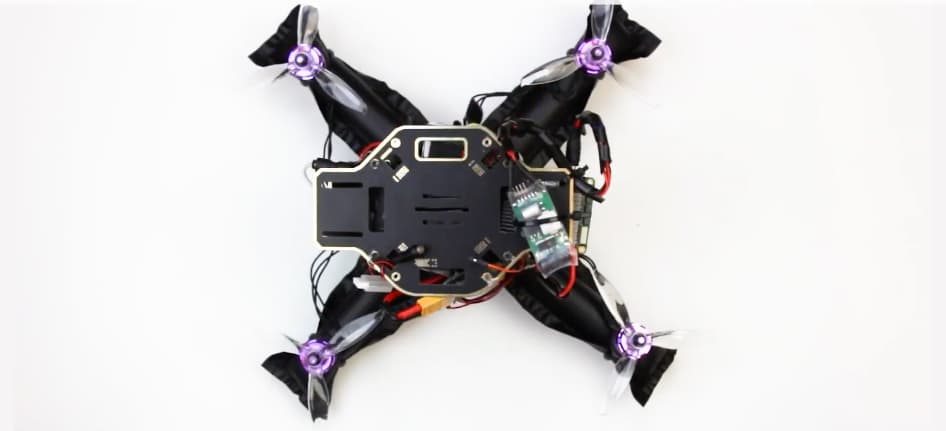If you’ve ever tried piloting a quadcopter drone, you’ll know that they invariably end up running into walls, trees or whatnot … often getting damaged in the process. An experimental new inflatable-body drone, however, just bounces off obstacles – plus it can grasp onto them.
Known as the SoBar (soft-bodied aerial robot), the copter is being developed by scientists at Arizona State University.
The drone’s electronic components are rigid, like they are on regular quadcopters. Its sealed high-strength polyurethane-coated nylon fabric frame, however, is inflatable – it was inspired by the thin-walled hollow bones of birds. The end of each propeller arm sticks out past the propeller itself, so the arm strikes vertical surfaces before the propeller does.
This design allows the SoBar to not only bounce harmlessly off walls, but also to slam down onto horizontal surfaces without being damaged. With that functionality in mind, the researchers equipped the drone with a bottom-mounted perching grasper made of steel leaf springs encased in an inflatable nylon sleeve.
When the grasper is pushed down hard against an object such as a branch, the previously flat springs automatically pop down and clasp around it, holding the SoBar in place – this means that the drone could indefinitely perch in that one location, as opposed to using up battery power by hovering. The mechanically bistable springs likewise don’t use any power to stay either flat or clasped.
Once it’s time to leave, an integrated actuator inflates and stiffens the grasper sleeves, causing the encased springs to pop back up into their flat configuration. The grasper takes only about three milliseconds to clasp onto objects, and less than three seconds to release itself.

Arizona State University
It is hoped that the SoBar technology could ultimately be used in applications such as search-and-rescue efforts at disaster sites, in which drones may have to navigate tight spaces where collisions with rubble or other wreckage are likely to occur.
“Drones need to physically interact with their surroundings to accomplish a range of tasks,” said the lead scientist, Assoc. Prof. Wenlong Zhang. “A soft body not only absorbs impact forces to provide collision resilience; it also offers the material compliance necessary for dynamic maneuvers such as perching.”
A paper on the research was recently published in the journal Soft Robotics. You can see the SoBar bouncing off a wall in the video below.
And no, this isn’t the first inflatable drone we’ve seen. The Diodon hexacopter can be deflated for easier storage, plus it lands and floats on the water’s surface when inflated.
SoBAR – Demonstrating Collision Resilience
Source: Arizona State University via EurekAlert
Source of Article